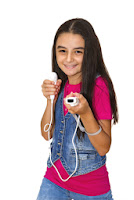Effects of robotic therapy on upper-extremity function in children with cerebral palsy: A systematic review
Chen, Y-P & Howard, A. M.
Development Neurorehabilitation, Early Online 1-8, 2014
DOI: 10.3109/17518423.2014.899648
Link to abstract: www.ncbi.nlm.nih.gov/pubmed/24724587
Objective: To systematically review the evidence of robotic therapy for the effects on upper extremity function for children with cerebral palsy.
Process: Robotic therapy is understood here to be “the application of electronic, computerized control systems to mechanical devices designed to perform human functions”. A literature search resulted in nine articles (7 case studies, one single case study and one randomized crossover design) relating to three robotic systems; CosmoBot, InMotion2, and NJIT-RAVR.
These were reviewed on 11 qualitative scales, with results ranging from 3/11 to 9/11 and averaging 6/11, using a protocol developed by Kwakkel et al and Cambach et al. The studies’ outcome measures were grouped using the ICF model: range of motion, muscle tone and kinematics outcomes were classified as either body structure and function; or activity outcomes, which were scored on the QUEST, Melbourne or Fugl-Meyer scales; or on parent questionnaires. Effect sizes were calculated using the Cochrane Review Manager.
Results: Studies all reported either increased reach duration, smoothness, reduced tone or improvement in some clinical measure. The majority of case studies in this systematic review limit the recommendations that could come from more robust, group design studies. No recommendations can be made.


















